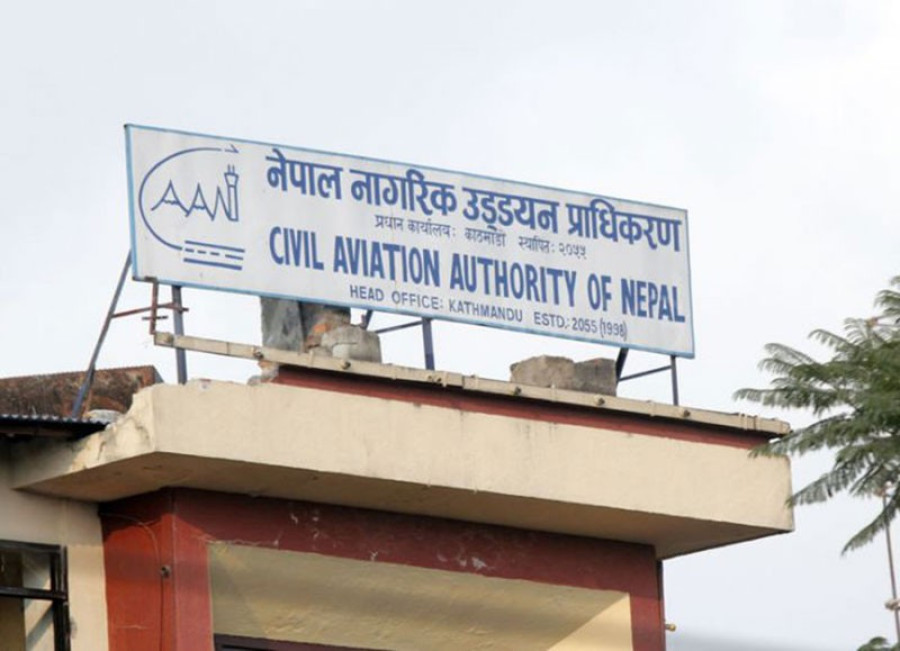Money
New legislation to split civil aviation body slows to crawl
The proposed Integrated Civil Aviation Bill to split the Civil Aviation Authority of Nepal into two entities—a regulatory body and service provider—to facilitate stringent enforcement of safety measures has been thrown into uncertainty again.
Sangam Prasain
The proposed Integrated Civil Aviation Bill to split the Civil Aviation Authority of Nepal into two entities—a regulatory body and service provider—to facilitate stringent enforcement of safety measures has been thrown into uncertainty again.
Progress on the legislation has been frustratingly slow. The government has been working on it for the last nine years. In the latest episode, the Tourism Ministry has formed yet another committee to prepare a new draft suggesting an appropriate modality to fragment the aviation authority. The ministry already has three draft reports gathering dust on its shelves.
A new five-member panel has been formed under the leadership of Tourism Joint Secretary Suresh Acharya. Some aviation authority and ministry officials doubt the motive behind setting up the committee, and said it could further delay the process which has been dragging on for nearly a decade. Stakeholders have been saying that delays in approving the new law have hampered making improvements to address the current safety issues and capacity constraints.
The first draft was prepared by a Spanish consultancy Ineco with Asian Development Bank funding of $4.2 million in 2014, following the approval by the board of the Civil Aviation Authority of Nepal in 2010. The proposed law is expected to replace two existing acts, Civil Aviation Act 1959 and Nepal Civil Aviation Authority Act 1996.
The legislation envisages integrating the previous acts to eliminate conflicts and contradictions at the Civil Aviation Authority of Nepal which currently has been functioning both as a regulator and service provider from the same office, and there is no clear demarcation between its duties and organisational structure.
Two years after the first draft was prepared, a four-member committee led by Tourism Joint Secretary Buddhi Sagar Lamichhane was formed to prepare another draft. The panel submitted its draft to the ministry in 2017.
Again in December 2018, a five-member panel led by Narendra Thapa, deputy director general of the Civil Aviation Authority of Nepal was formed to prepare the draft. The panel submitted the draft in early January to the ministry proposing a slew of changes to the draft prepared earlier by another government committee.
“It’s already nine years in the works, and we don’t know how long it will take,” said a high-level official at the Civil Aviation Authority of Nepal who wanted to remain unnamed.
“It’s a clear indication that the aviation body will not be split any time soon. There is no seriousness. A number of international aviation safety agencies have even slammed Nepal’s poor progress in ensuring air safety.”
In mid-February, the Tourism Ministry informed the ambassadors of different European countries, including the ambassador of the European Union Delegation to Nepal, about the progress achieved in breaking up the Civil Aviation Authority into two entities, which they said was a prerequisite to remove Nepal from the European Union air safety list.
On December 5, 2013, the European Commission had put Nepal on the European Union air safety list as it found it lacking the ability to oversee aviation safety issues. It had asked that the Civil Aviation Authority be broken up with a clear demarcation as its dual functions gave rise to a conflict of interest.
The late tourism minister Rabindra Adhikari had informed international aviation safety agencies and the International Civil Aviation Organisation on different occasions on Nepal’s plan to table the Integrated Civil Aviation Bill in the winter session of Parliament, which has now ended. Lawmakers at the parliamentary Public Accounts Committee have also complained that the Tourism Ministry does not seem serious about splitting the civil aviation agency into two entities.




 15.12°C Kathmandu
15.12°C Kathmandu















